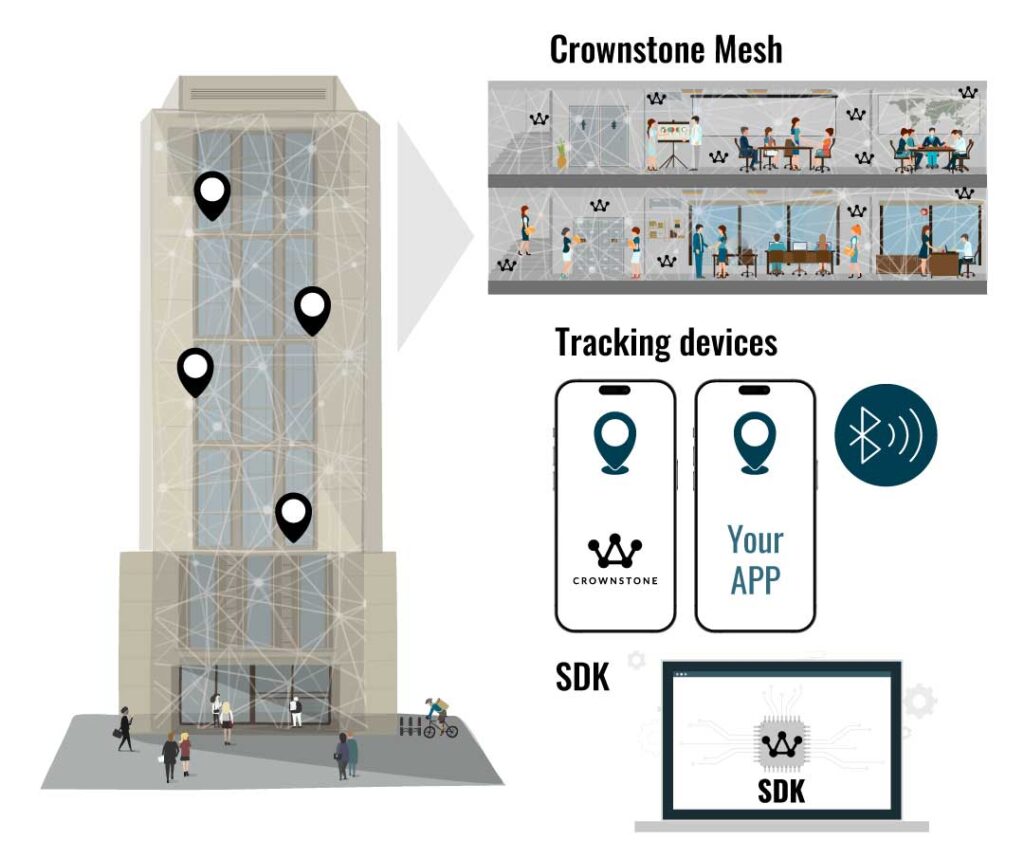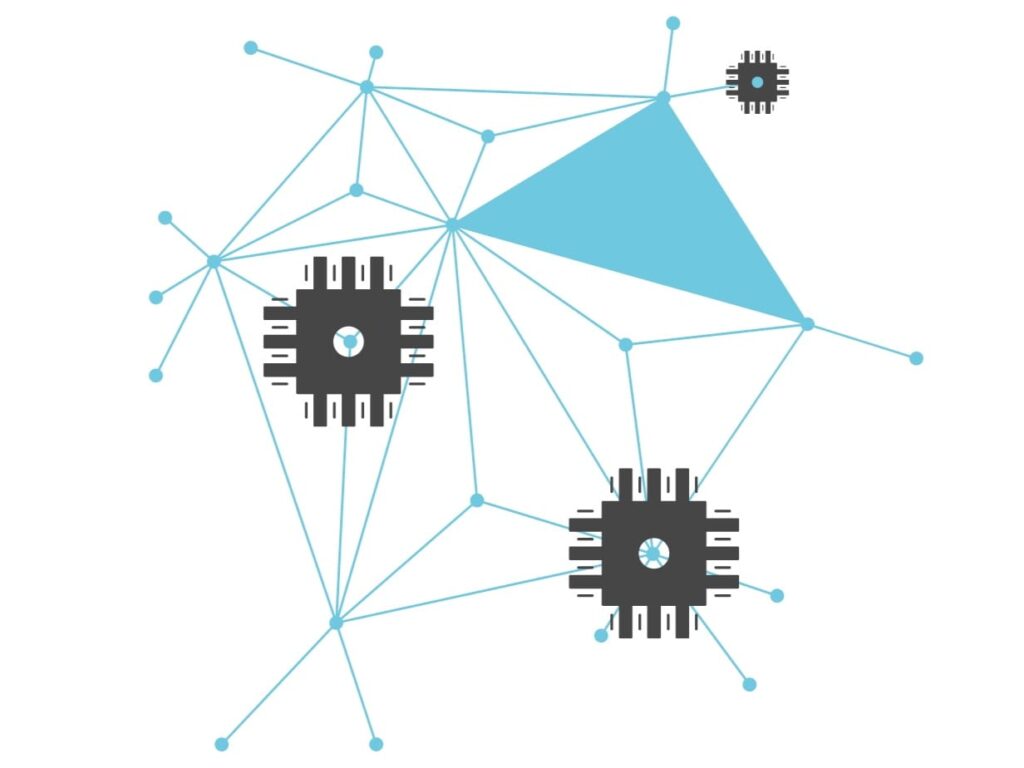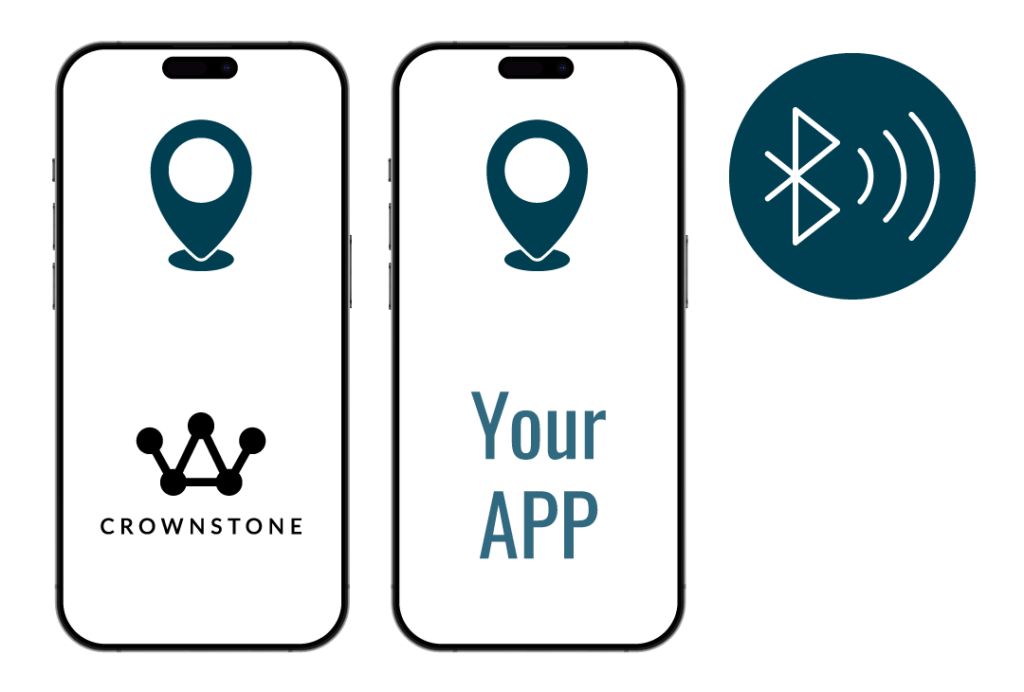Crownstone's Indoor Positioning System (IPS)
Easily add indoor localization to your location-aware app or product

Crownstone’s Indoor Positioning System (IPS) is a highly accurate and reliable indoor positioning system that can easily be integrated into your app or work independently via the Crownstone app.
The Crownstone IPS lets you easily locate people or objects indoors.
How does the Crownstone IPS work
The Crownstone IPS consists of different components with built-in modularity, which allows customization and easy installation without IT support.
The components of the Crownstone IPS are:
- The Crownstone Mesh network
- Tracking devices
- External connectivity: SDK

Crownstone Mesh
Hardware: Crownstone built-ins
Crownstones are Bluetooth devices that are attached directly to a power socket behind the wall.
The benefits are:
- The Crownstone is out of sight
- The Crownstone is powered by electricity and doesn’t require batteries
- The Crownstone can also measure energy usage on a device level

Mesh firmware
The firmware on the Crownstones is designed to manage communication, ensuring seamless interaction within the Crownstone mesh network.
Secondly, it facilitates the transmission of signals and data from Crownstones to a communication hub.

Communication hub
The communication hub is our main communications tool to for example 3rd party apps, or even other sensors in the building, e.g. fire detectors.

Detection devices
There are multiple ways a person or object can be detected in the mesh network.
The most common are:
- Smartphone with the Crownstone app installed on it
- Smartphone with your app installed on it that uses the Crownstone IPS SDK
- Tags or beacons


SDK
The Crownstone SDK allows your app to be easily connected to Crownstone IPS.
Information from the communication hub, e.g. localization data, presence, etc, can be communicated directly into your app.
Benefits
Highly accurate and reliable indoor localization
Real-time location system
Easy integration with existing systems
No maintenance required
No batteries required
Scalability to fit your growing business
Out-of-sight: aesthetically pleasing and tamper-free
SDK is available to integrate indoor positioning into your app easily
The Ultimate Guide to Indoor Positioning Systems (IPS)

Want to know more about indoor positioning, how it can enhance location-aware applications that require indoor location data about objects or people, and the technology behind it?
Download our The Ultimate Guide to Indoor Positioning Systems (IPS) for free!
Want to know more about our easy-to-integrate, accurate IPS?
Download the brochure


Free consultation
Explore the possibilities of Indoor Positioning for your software application
Intrigued to find out how indoor positioning could enhance your software application?
Take a moment to think about the potential improvements or new features that would get you new clients or make your existing clients happier. Or do you already have an idea but are you not sure how it would work?
Schedule a free consultation with our experts to discuss your ideas. Discover if and how indoor positioning can support your vision.
Simply fill out the form to get started!
